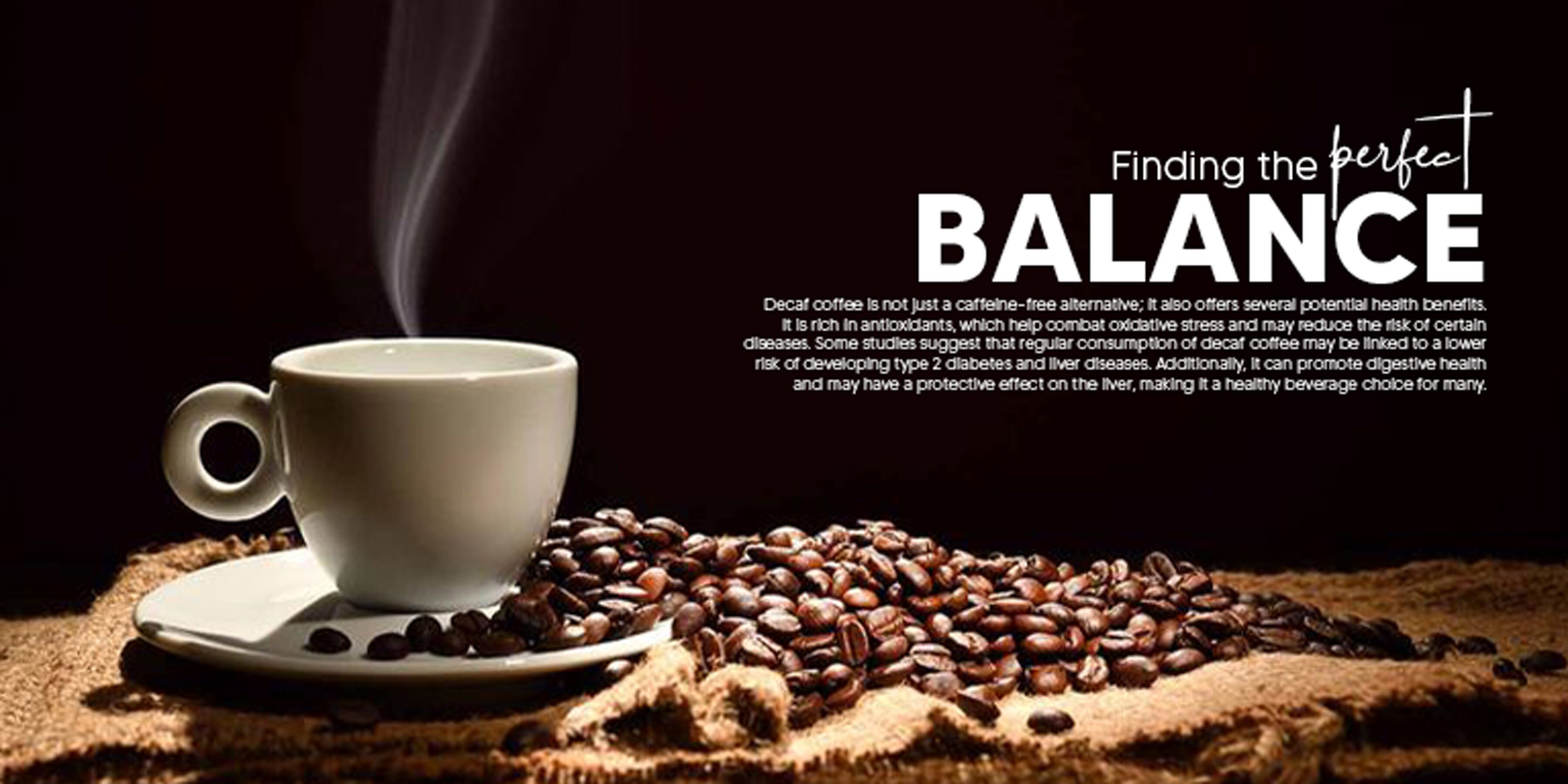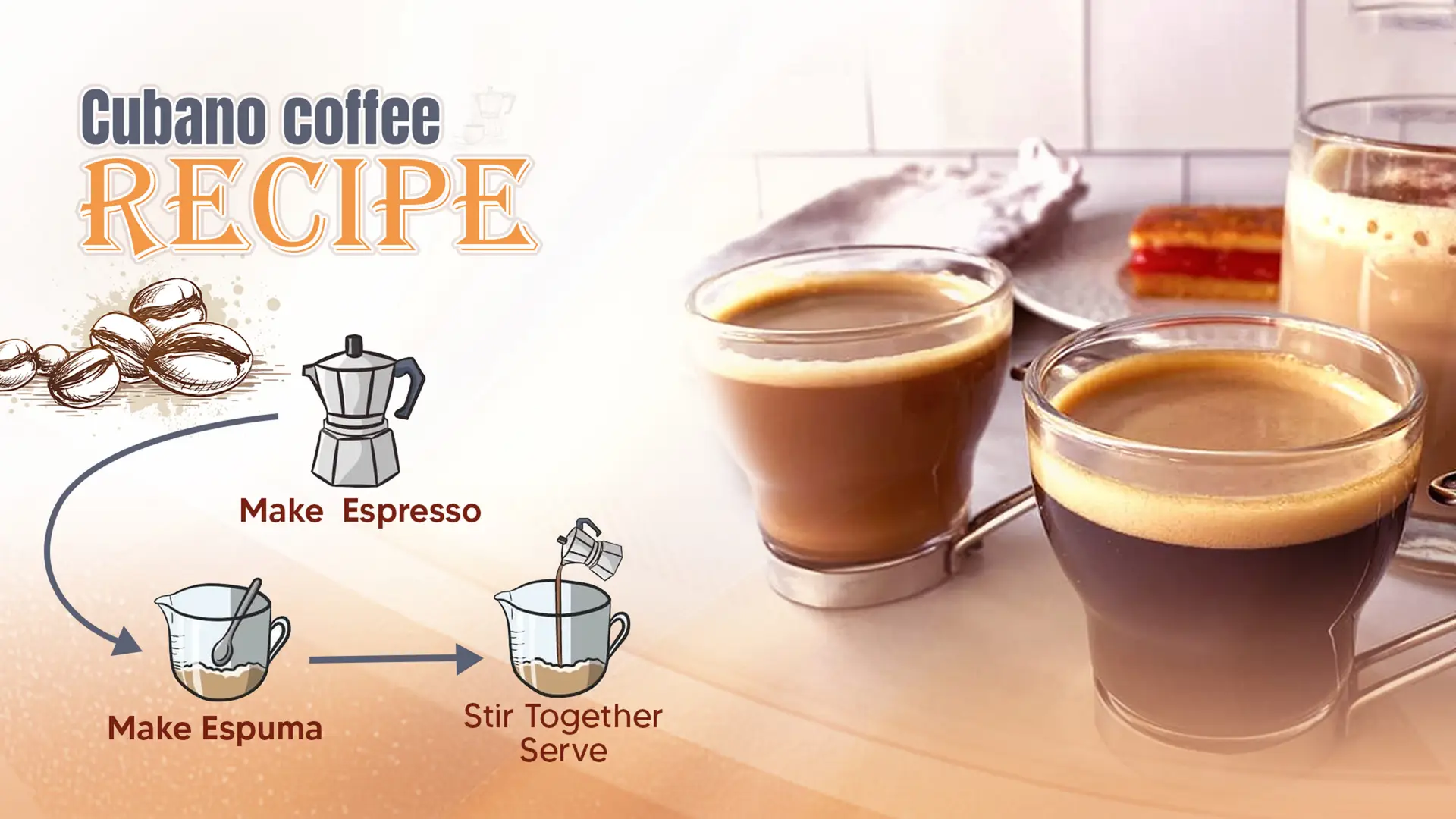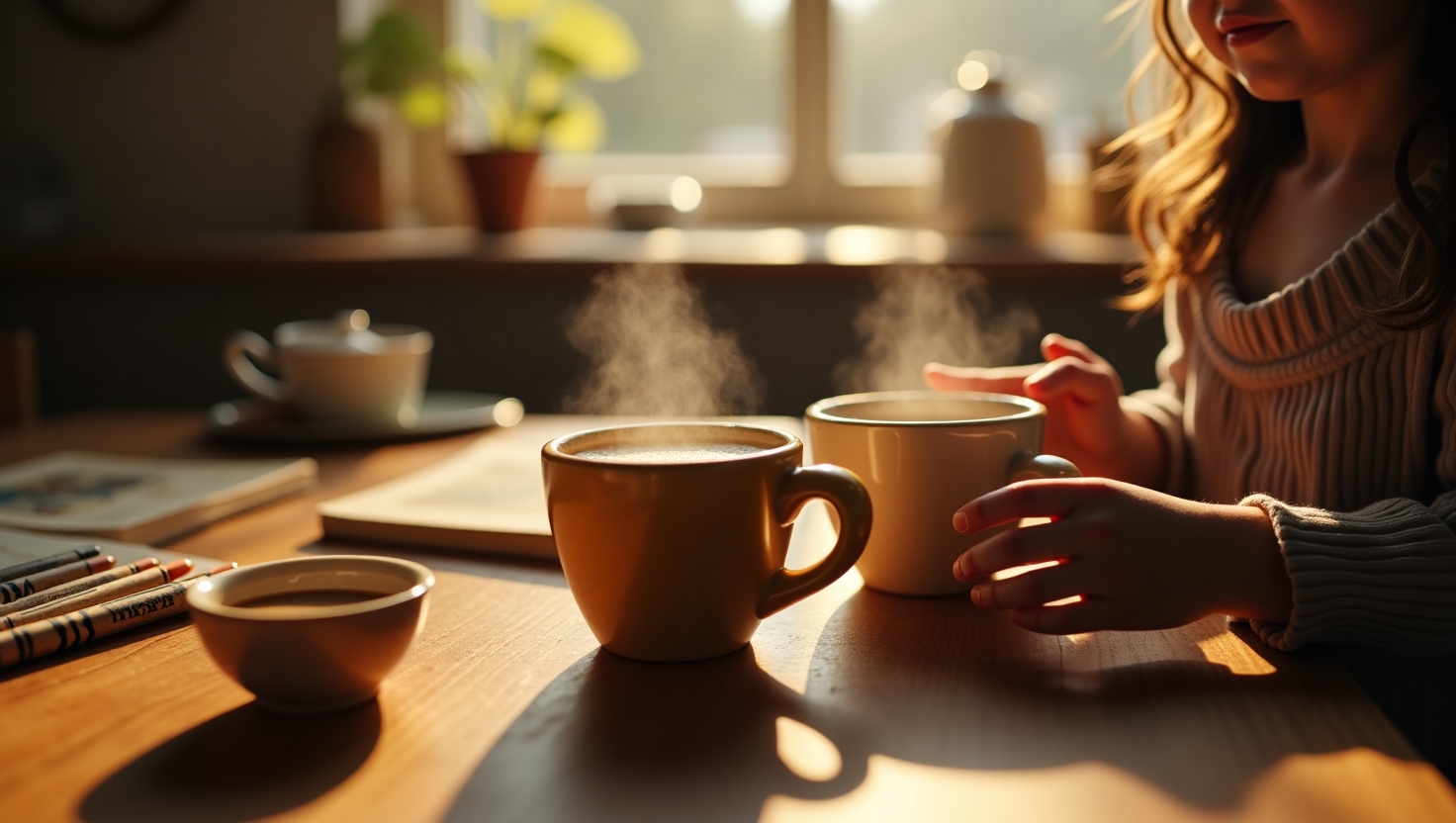Discover the Richness of Colombia Coffee: A Complete Guide Discover the Richness of Colombia Coffee: A Complete Guide Introduction to...
Read MoreDecaf Coffee: Enjoy Rich Flavor Without the Caffeine Jitters

Health Benefits of Decaf Coffee: A Smarter Way to Enjoy Your Brew

Health Benefits of Decaf Coffee: A Smarter Way to Enjoy Your Brew


Introduction
Discuss the growing trend of decaf coffee.
Over the past few years, the rise of Decaf coffee has intrigued coffee lovers as well as health-conscious consumers. With more and more people looking to cut back on caffeine without sacrificing the rich flavors and aromas of their favorite brews, decaffeinated coffee has experienced a staggering resurgence. Also, this change comes from a need for healthier lifestyles, improved sleep quality, and more understanding of caffeine’s impact on anxiety and heart health. This coffee has stepped into the limelight thanks to new brewing processes and quality beans.
The Best Decaf Coffee: What to Look For
Key factors in choosing the best decaf coffee, from flavor to price.
There are a number of factors to consider when choosing the best Decaf coffee flavor, price, and preparation method, for example. First, looking at flavor profile, good decaf should maintain regular coffee’s rich and complex notes. Choose beans that have been decaffeinated using meticulous processes like the Swiss Water Method to maintain flavor. Also, shop price; a better decaf usually comes at a premium, so weigh your wallet with your taste. Consider checking out customer reviews and recommendations to ensure you choose a Decaf coffee that meets your expectations. With your feelings and these reasons, you can find the best cup!
Highlight some of the top-rated decaf brands in the market.
In the world of best Decaf coffee brands, there are a few that shine above the rest for their rich flavor and quality. For coffee lovers, Peet’s Coffee has a rich, full-bodied decaf and Lavazza. It is a beautifully smooth and aromatic blend that is perfect for any time of the day. Bold and colorful decaf options are available from Kicking Horse Coffee, so those who want to enjoy the coffee flavor without the jitters should find something appealing. Also, Starbucks carries a good, balanced decaf that still reflects its signature flavors. All of these brands are highly rated, so any of them would be an excellent choice for anyone looking for a flavorful coffee experience.
Organic Decaf Coffee: What Makes It Special?
Break down the difference between organic decaf and regular decaf coffee.
Learn why this matters for making better coffee and why the difference between organic Decaf coffee and this coffee is key. Organic Decaf coffee Actual organic coffee comes from beans grown without synthetic pesticides or fertilizers, offering a healthier, more sustainable product. This outside input can poison the ecosystem after all, but it does help bring flavor, as growing organically can allow the beans to flourish naturally. Regular decaf, on the other hand, can have been made with conventionally grown beans that may have harmful residues. Organic decaf beans are often processed using methods such as the Swiss Water Process, which preserves more flavor. Why should you only choose organic decaf? Because you care about quality, health, and sustainability.
Discuss health benefits and environmental impact.
So, these are some great health benefits of drinking decaf coffee, which makes it a go-to drink for many. It may lower anxiety and improve sleep quality when it contains less caffeine but still provides antioxidants beneficial for overall wellness. Decaf coffee may also boost heart health and reduce the risk of some diseases. However, from an environmental impact standpoint, drinking decaf can also be good. Most decaf brands, particularly organic ones, emphasize sustainable farming methods that preserve ecosystems and biodiversity. Fortunately, consumers can help protect our forests and planet with world-conscientious no-caffeination beverages.

Decaf Cold Brew Coffee: The Trendy Alternative
Why cold brew is becoming a popular method for decaf coffee lovers.
There is a rapid growth of decaf cold brew coffee in the category, which is a beautifully smooth and refreshing option for coffee lovers. This brewing method steeping coarsely ground decaf coffee in cold water for a long time and creates a less acidic and naturally sweeter flavor profile. The decaf cold brew is a fashionable option for people who want to relish a robust flavor without the jitters that come with caffeine. You can get creative with flavored syrups or milk alternatives, where this type of beverage is especially popular in warmer weather. Decaf cold brew is here to stay, with its unique flavor and various health benefits!
Top brands offer decaf cold brew coffee.
If you are looking for a decaf cold brew coffee, then there are some amazing brands to choose from. Stumptown Coffee Roasters is known for its rich, smooth decaf cold brew, which it prepares in such a way as to preserve the natural sweetness of the coffee. Great decaf availability: Blue Bottle Coffee also sells an excellent decaf cold brew, which is somewhat lower in acidity and has an equally balanced flavor. Also, Califia Farms Has a delicious ready-to-drink decaf cold brew for those on the go. Does decaf cold brew coffee even taste good? Well, with these top brands, it can be a delightful drink without sacrificing taste!
How Decaf Coffee Beans Affect Taste and Quality
Talk about how decaf beans are processed and how this affects the flavor.
The flavor and quality of decaf coffee beans heavily rely on the decaffeination process. One of the best-known methods of decaffeination, the Swiss Water Process, employs water to softly remove the caffeine while preserving the flavors and aroma of the bean to provide a rich yet smooth taste. On the other hand, chemical processes like the use of solvents can gnaw those special characteristics from the beans, resulting in a flat or dull flavor profile. Some consumers try to keep their coffee beans as close as possible to the original organic coffee beans that are used to produce decaf. Quality processing methods elevate the flavor profile, which means you don’t have to settle for a less satisfying cup of joe.
Mention how to roast decaf beans to enhance flavor.
A step we take to get the most flavor out of this coffee beans is to roast them. For better taste, always begin with high-quality, freshly decaffeinated beans using this method or similar to the Swiss Water Process. Roast them at a low-medium temperature, roughly 400 degrees Fahrenheit, so you create a rich, balanced profile without scorching the beans. Keep a close eye on the roasting time; a light to medium roast will emphasize the natural sweetness and acidity, while a darker roast will bring out deeper, chocolatey notes. Give the beans time to cool and to sit for a few hours after roasting; this will help the flavors develop, so your Non-caffeinated coffee is lovely.

How to Enjoy Decaf Coffee Throughout the Day
Tips on making decaf a part of your daily routine without disrupting sleep.
Adding decaf to your daily cup can improve your coffee experience without interfering with sleep. If you want to get rid of caffeine, start in the morning and enjoy decaf, which will taste the same but without a kick. Choose an afternoon treat, such as an iced decaf latte, to get a cold boost without ruining your night’s sleep. Consider limiting your use to the morning, and preferably no later than mid-afternoon, in order to avoid a negative impact on your sleep. You can also serve decaf with snacks or desserts to maximize its taste goals without compromising on your daily routine. But with these tips, you can enjoy this coffee all day long without a problem!
Creative ways to enjoy decaf coffee: iced, with milk, or in recipes.
You can enjoy this coffee infinitely; it allows you to taste it whenever you like. A few popular options: You can drink iced decaf coffee, which is great for warm days; just brew a strong decaf pot, let it cool, and serve it over ice. For a creamier experience, try it with milk or plant-based alternatives, adding to the rich flavor of the coffee. Furthermore, decaf coffee may be added to different sorts of recipes, including coffee smoothies, desserts like tiramisu, or simply as a flavor enhancer in baked goods. Try these creative ways to enjoy this coffee so you can indulge without the jitters throughout your day!
Recap the benefits of choosing decaf coffee.
If you love coffee but hate feeling jumpy, decaf may be a good choice. Whether as a remedy for daytime jitters, as an ingredient in your favorite recipes or as something you enjoy as part of your daily routine, decaf offers a brilliantly flavorful coffee experience. This approach allows consumers to comprehend the processing methods and suitable roasting styles, receiving a cup of decaf coffee that is full of aroma and quality. A decaf should give the best of both worlds: a decaf latte for the daytime iced drink or a warm decaf for the night; either way, caffeine enthusiasts can delight their appetite while maintaining their wholesome lives, giving the flexibility to enjoy the brew.
Popular Posts
Cubano Coffee: A Bold, Sweet Espresso Experience
Cubano Coffee: Unleash the Secrets Behind Its Rich Cubano Coffee: Unleash the Secrets Behind Its Rich Introduction Highlight the unique...
Read MoreInstant Espresso: Enjoy Rich Espresso Anytime, Anywhere
The Ultimate Guide to Espresso Beans: What You Need to Know The Ultimate Guide to Espresso Beans: What You Need...
Read MoreCortado Coffee: A Perfect Balance of Espresso and Milk
Cortado Coffee: A Perfect Harmony of Espresso and Milk! Cortado Coffee: A Perfect Harmony of Espresso and Milk! Introduction A...
Read MoreChildren’s Coffee: A Kid-Friendly Coffee Alternative
Childrens Coffee That Supports Brain and Body Growt Childrens Coffee That Supports Brain and Body Growt Introduction: Understanding Childrens Coffee...
Read More
Introduction
Discuss the growing trend of decaf coffee.
Over the past few years, the rise of Decaf coffee has intrigued coffee lovers as well as health-conscious consumers. With more and more people looking to cut back on caffeine without sacrificing the rich flavors and aromas of their favorite brews, decaffeinated coffee has experienced a staggering resurgence. Also, this change comes from a need for healthier lifestyles, improved sleep quality, and more understanding of caffeine’s impact on anxiety and heart health. This coffee has stepped into the limelight thanks to new brewing processes and quality beans.
The Best Decaf Coffee: What to Look For
Key factors in choosing the best decaf coffee, from flavor to price.
There are a number of factors to consider when choosing the best Decaf coffee flavor, price, and preparation method, for example. First, looking at flavor profile, good decaf should maintain regular coffee’s rich and complex notes. Choose beans that have been decaffeinated using meticulous processes like the Swiss Water Method to maintain flavor. Also, shop price; a better decaf usually comes at a premium, so weigh your wallet with your taste. Consider checking out customer reviews and recommendations to ensure you choose a Decaf coffee that meets your expectations. With your feelings and these reasons, you can find the best cup!
Highlight some of the top-rated decaf brands in the market.
In the world of best Decaf coffee brands, there are a few that shine above the rest for their rich flavor and quality. For coffee lovers, Peet’s Coffee has a rich, full-bodied decaf and Lavazza. It is a beautifully smooth and aromatic blend that is perfect for any time of the day. Bold and colorful decaf options are available from Kicking Horse Coffee, so those who want to enjoy the coffee flavor without the jitters should find something appealing. Also, Starbucks carries a good, balanced decaf that still reflects its signature flavors. All of these brands are highly rated, so any of them would be an excellent choice for anyone looking for a flavorful coffee experience.
Organic Decaf Coffee: What Makes It Special?
Break down the difference between organic decaf and regular decaf coffee.
Learn why this matters for making better coffee and why the difference between organic Decaf coffee and this coffee is key. Organic Decaf coffee Actual organic coffee comes from beans grown without synthetic pesticides or fertilizers, offering a healthier, more sustainable product. This outside input can poison the ecosystem after all, but it does help bring flavor, as growing organically can allow the beans to flourish naturally. Regular decaf, on the other hand, can have been made with conventionally grown beans that may have harmful residues. Organic decaf beans are often processed using methods such as the Swiss Water Process, which preserves more flavor. Why should you only choose organic decaf? Because you care about quality, health, and sustainability.
Discuss health benefits and environmental impact.
So, these are some great health benefits of drinking decaf coffee, which makes it a go-to drink for many. It may lower anxiety and improve sleep quality when it contains less caffeine but still provides antioxidants beneficial for overall wellness. Decaf coffee may also boost heart health and reduce the risk of some diseases. However, from an environmental impact standpoint, drinking decaf can also be good. Most decaf brands, particularly organic ones, emphasize sustainable farming methods that preserve ecosystems and biodiversity. Fortunately, consumers can help protect our forests and planet with world-conscientious no-caffeination beverages.

Decaf Cold Brew Coffee: The Trendy Alternative
Why cold brew is becoming a popular method for decaf coffee lovers.
There is a rapid growth of decaf cold brew coffee in the category, which is a beautifully smooth and refreshing option for coffee lovers. This brewing method steeping coarsely ground decaf coffee in cold water for a long time and creates a less acidic and naturally sweeter flavor profile. The decaf cold brew is a fashionable option for people who want to relish a robust flavor without the jitters that come with caffeine. You can get creative with flavored syrups or milk alternatives, where this type of beverage is especially popular in warmer weather. Decaf cold brew is here to stay, with its unique flavor and various health benefits!
Top brands offer decaf cold brew coffee.
If you are looking for a decaf cold brew coffee, then there are some amazing brands to choose from. Stumptown Coffee Roasters is known for its rich, smooth decaf cold brew, which it prepares in such a way as to preserve the natural sweetness of the coffee. Great decaf availability: Blue Bottle Coffee also sells an excellent decaf cold brew, which is somewhat lower in acidity and has an equally balanced flavor. Also, Califia Farms Has a delicious ready-to-drink decaf cold brew for those on the go. Does decaf cold brew coffee even taste good? Well, with these top brands, it can be a delightful drink without sacrificing taste!
How Decaf Coffee Beans Affect Taste and Quality
Talk about how decaf beans are processed and how this affects the flavor.
The flavor and quality of decaf coffee beans heavily rely on the decaffeination process. One of the best-known methods of decaffeination, the Swiss Water Process, employs water to softly remove the caffeine while preserving the flavors and aroma of the bean to provide a rich yet smooth taste. On the other hand, chemical processes like the use of solvents can gnaw those special characteristics from the beans, resulting in a flat or dull flavor profile. Some consumers try to keep their coffee beans as close as possible to the original organic coffee beans that are used to produce decaf. Quality processing methods elevate the flavor profile, which means you don’t have to settle for a less satisfying cup of joe.
Mention how to roast decaf beans to enhance flavor.
A step we take to get the most flavor out of this coffee beans is to roast them. For better taste, always begin with high-quality, freshly decaffeinated beans using this method or similar to the Swiss Water Process. Roast them at a low-medium temperature, roughly 400 degrees Fahrenheit, so you create a rich, balanced profile without scorching the beans. Keep a close eye on the roasting time; a light to medium roast will emphasize the natural sweetness and acidity, while a darker roast will bring out deeper, chocolatey notes. Give the beans time to cool and to sit for a few hours after roasting; this will help the flavors develop, so your Non-caffeinated coffee is lovely.

How to Enjoy Decaf Coffee Throughout the Day
Tips on making decaf a part of your daily routine without disrupting sleep.
Adding decaf to your daily cup can improve your coffee experience without interfering with sleep. If you want to get rid of caffeine, start in the morning and enjoy decaf, which will taste the same but without a kick. Choose an afternoon treat, such as an iced decaf latte, to get a cold boost without ruining your night’s sleep. Consider limiting your use to the morning, and preferably no later than mid-afternoon, in order to avoid a negative impact on your sleep. You can also serve decaf with snacks or desserts to maximize its taste goals without compromising on your daily routine. But with these tips, you can enjoy this coffee all day long without a problem!
Creative ways to enjoy decaf coffee: iced, with milk, or in recipes.
You can enjoy this coffee infinitely; it allows you to taste it whenever you like. A few popular options: You can drink iced decaf coffee, which is great for warm days; just brew a strong decaf pot, let it cool, and serve it over ice. For a creamier experience, try it with milk or plant-based alternatives, adding to the rich flavor of the coffee. Furthermore, decaf coffee may be added to different sorts of recipes, including coffee smoothies, desserts like tiramisu, or simply as a flavor enhancer in baked goods. Try these creative ways to enjoy this coffee so you can indulge without the jitters throughout your day!
Recap the benefits of choosing decaf coffee.
If you love coffee but hate feeling jumpy, decaf may be a good choice. Whether as a remedy for daytime jitters, as an ingredient in your favorite recipes or as something you enjoy as part of your daily routine, decaf offers a brilliantly flavorful coffee experience. This approach allows consumers to comprehend the processing methods and suitable roasting styles, receiving a cup of decaf coffee that is full of aroma and quality. A decaf should give the best of both worlds: a decaf latte for the daytime iced drink or a warm decaf for the night; either way, caffeine enthusiasts can delight their appetite while maintaining their wholesome lives, giving the flexibility to enjoy the brew.
Popular Posts
Arabic Coffee: A Traditional Brew with Rich Flavors
Arabic Coffee History That Will Fascinate You Arabic Coffee History That Will Fascinate You What is Arabic coffee? Arabic coffee,...
Read MoreCortado Coffee: A Perfect Balance of Espresso and Milk
Cortado Coffee: A Perfect Harmony of Espresso and Milk! Cortado Coffee: A Perfect Harmony of Espresso and Milk! Introduction A...
Read MoreAmaretto Coffee: A Sweet, Nutty Twist on Your Favorite Brew
How to Make the Best Amaretto Coffee: Delicious Recipes & Syrup Guide How to Make the Best Amaretto Coffee: Delicious...
Read MoreDecaf Coffee: Enjoy Rich Flavor Without the Caffeine Jitters
Health Benefits of Decaf Coffee: A Smarter Way to Enjoy Your Brew Health Benefits of Decaf Coffee: A Smarter Way...
Read MoreEspresso Beans: Find the Best Beans for Perfect Espresso
Boost Your Day with Instant Espresso: Quick & Delicious! Boost Your Day with Instant Espresso: Quick & Delicious! Introduction A...
Read MoreCortadito Coffee: A Sweet, Bold Cuban Espresso Drink
Cortadito Coffee: Why This Cuban Drink Should Be Your Next Favorite Cortadito Coffee: Why This Cuban Drink Should Be Your...
Read More









